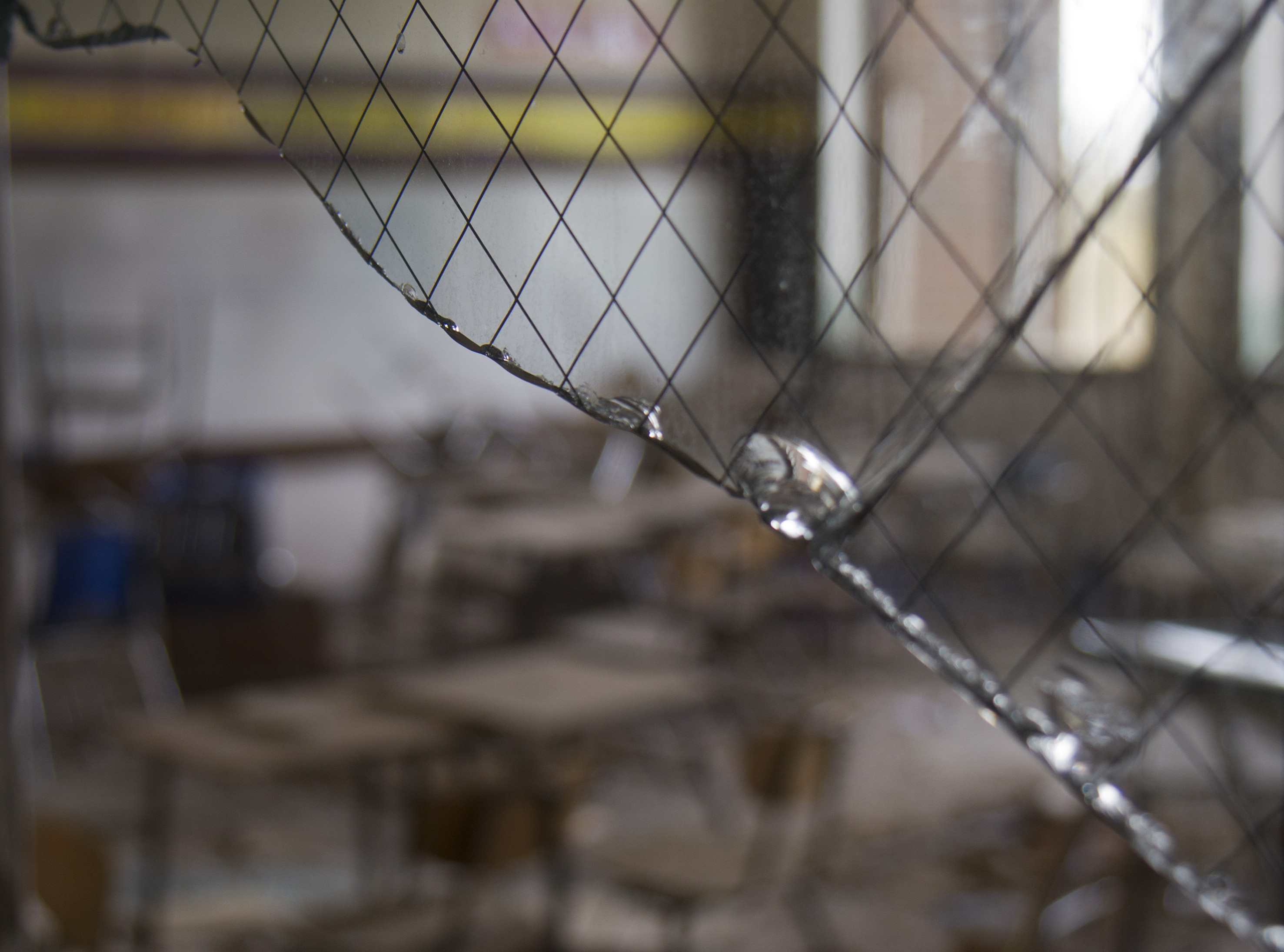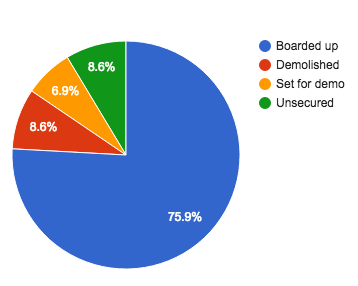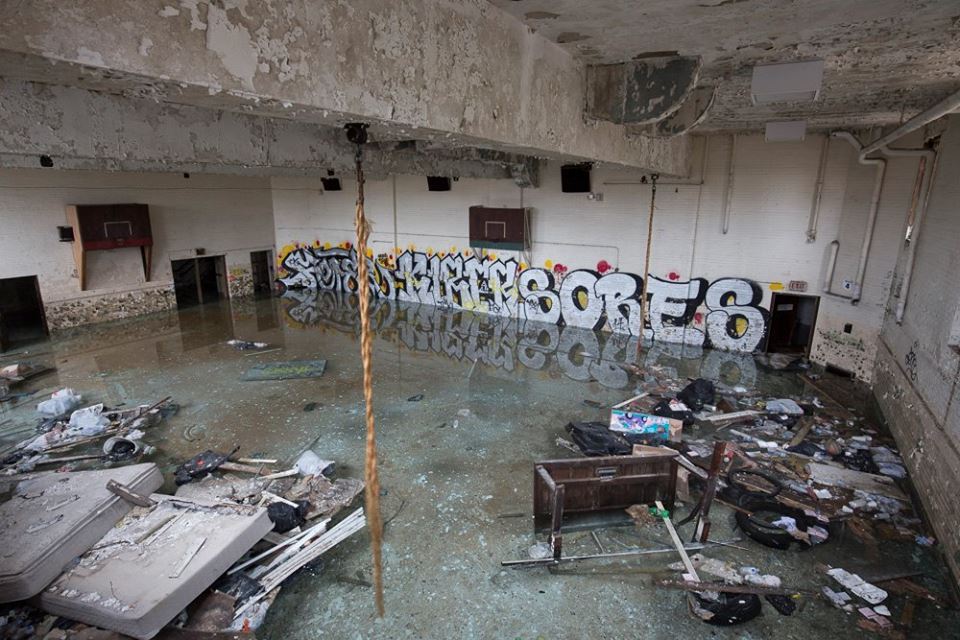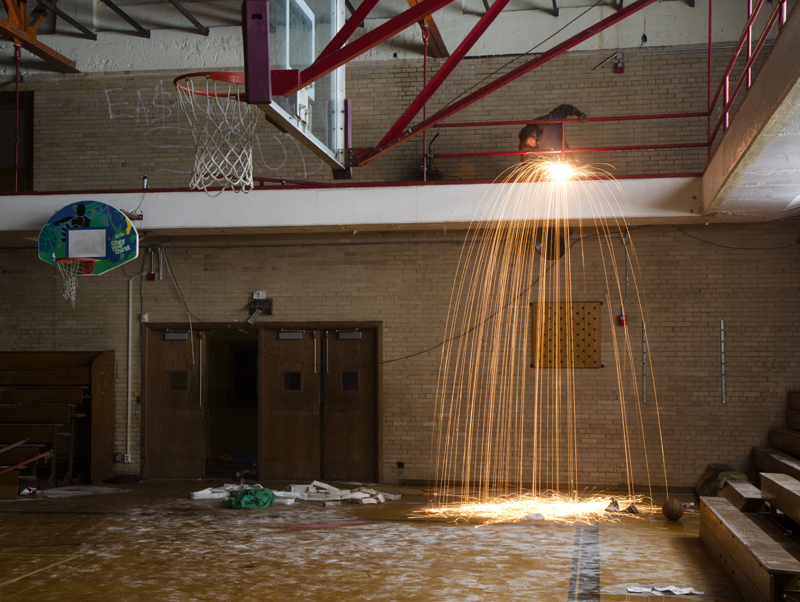
By Steve Neavling
Motor City Muckraker
The city of Detroit took possession last year of 58 vacant, blighted schools that were left to languish as they were gutted by scrappers under the control of the state-run public education system.
Since then, Mayor Mike Duggan’s administration has done what the state often had failed to do since taking over Detroit Public Schools in 2009 – secure the potentially valuable buildings and demolish the ones beyond repair.
 Since last year, the city has secured 44 of the 58 vacant schools, leading to dozens of jobs for young Detroiters, who earned $9.50 an hour boarding up buildings while learning about the construction trade through the Opportunity Detroit Youth & Trades Board-Up Program.
Since last year, the city has secured 44 of the 58 vacant schools, leading to dozens of jobs for young Detroiters, who earned $9.50 an hour boarding up buildings while learning about the construction trade through the Opportunity Detroit Youth & Trades Board-Up Program.
The city also has razed five schools, and four more demolitions are under contract or out for bid, said Brian Farkas, director of special projects for the Detroit Building Authority.
Last week, only five buildings remained unsecured. The city began boarding up one of those – Sampson Elementary on the west side – on Wednesday, one day after Motor City Muckraker alerted the mayor’s office that the building was open to trespass and flooding because of a broken water pipe.
In the past, DPS ignored us when we notified state officials of dangerous, vacant buildings that were diminishing nearby property values.

Since DPS closed 195 schools since 2000, it often failed to notify the Detroit Water and Sewerage Department to shut off the water, causing many buildings to flood when pipes burst or were destroyed by scrappers. The water caused significant damage to numerous schools.
Vacant schools have been a frequent target of scrappers, who rip apart walls, plumbing, pipes and light fixtures for copper.
“Vacant schools are especially problematic because of the speed with which they fall into disrepair,” according to an alarming report issued last month by Detroit-based Loveland Technologies. “As routine maintenance stops, nature begins to work its way into the building. Leaking roofs allow water to penetrate deep into the building, causing plaster to dissolve and the growth of mold. Freezing temperatures cause paint to flake off the walls, and wood floors warp as moisture builds up.
“The most destructive force, however, is human. As the district began to close schools in 2003, the value of scrap metal, particularly copper, was on the rise as demand in China outstripped production.”

In addition to securing vacant buildings, the city is demanding that DPS correct health violations at occupied schools, where conditions are so bad that teachers and students have walked out in protest this year. During inspections of more than a dozen schools so far this year, city officials found buildings with rats, cockroaches, mold, chilly classrooms, leaking roofs, broken windows and dark bathrooms.
“I don’t want there to be any confusion,” Duggan said. “A claim of a shortage of funds is not a defense to violations of building or health codes for any building owner. We’re not going to allow our children, DPS employees, or the public to continue to be subjected to substandard conditions.”
Detroit schools riddled with rodents, mold, broken toilets, fire hazards, no heat
Steve Neavling
Steve Neavling lives and works in Detroit as an investigative journalist. His stories have uncovered corruption, led to arrests and reforms and prompted FBI investigations.

7 Responses to "Here’s what happened to 58 vacant schools taken over by Detroit"